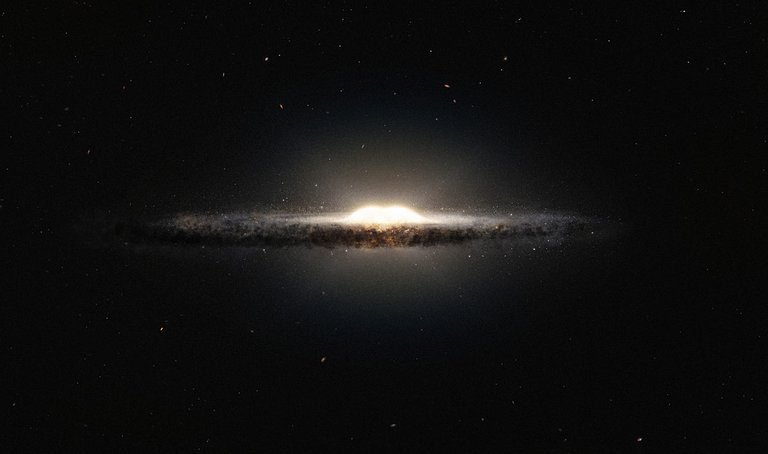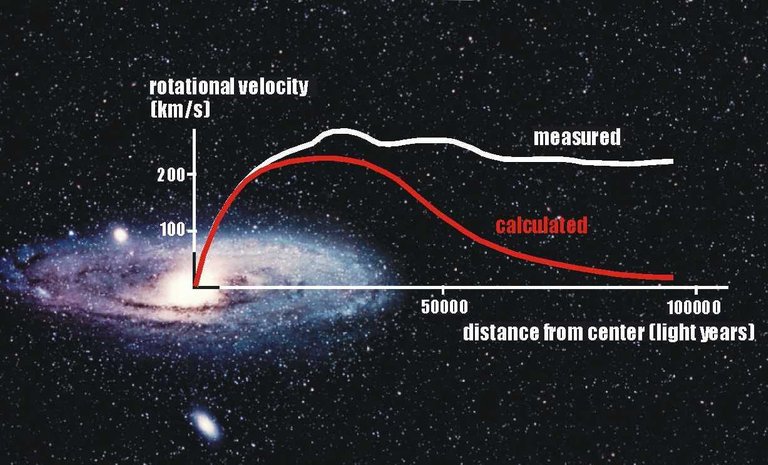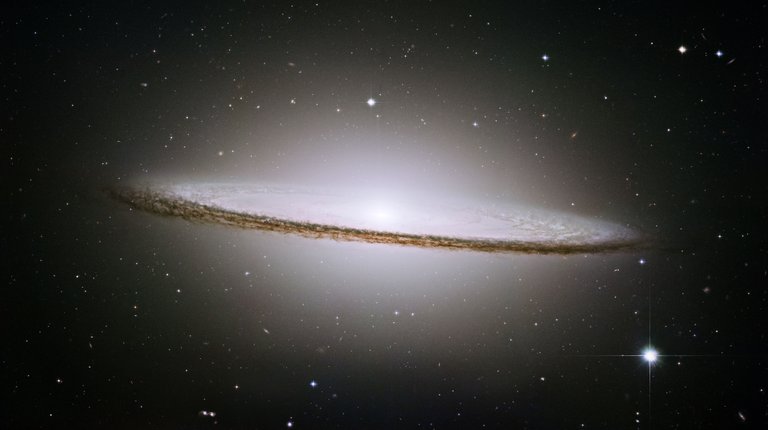Being an Astrophysicist is not a simple task. Mostly when meeting new people and explaining astro things to them. First, inevitable question is ''what do you do?''. After getting an answer, they are usually confused, because it is rare profession and one of the least understood. Or they just laugh at me, thinking like, ok you just made up that word.
After confusion/laughter next question is ''so, you are looking at the stars, can you predict future?'' (this is mostly because in my country horoscopes and fake psychics are extremely popular).
So, to avoid misunderstandings, I decided to write this article, and every time someone asks me what's my job, I'll just forward him/her this text.
INTRODUCTION
Astrophysics is extremely wide subject. You can study the Sun, the Moon, asteroids, astrobiology, Milky Way, or other galaxies, or even beginning of the time known as Big Bang, or some mysterious objects such as black holes, quasars etc.
Since I was a child I was profoundly fascinated by the wonders of the Universe. Most of all, I was interested in how the biggest observed structures in the Universe grow and evolve. The biggest observed structures in known Universe are galaxies.
I was determined to follow my dreams, and today I am engaged in a project regarding galaxy formation/evolution.
More precisely, I'm trying to understand how galaxies grow and evolve by accreting dark matter particles using numerical simulations.
Galactic processes are lengthy and we are not able to observe how galaxies form, or grow. Time scales of galactic lives are billions of years. But, thanks to advanced computing technology and knowledge we are able to create little Universes in our computers. To create authentic environment, to include all natural forces, and to see what 10 billion years look like in five minutes. To repeat same experiment as many times as needed, to change initial conditions according to the problem and so on.
But let's go step by step.
First of all, I have to present brief theoretical introduction needed for better understanding of project details.
GALAXY MORPHOLOGY
Usual galaxies are consisted of three parts- bulge, disc and halo. Bulge is the central part of galaxy, with huge density, containing molecular clouds and central black hole. Disc is disc-shaped part, usually having spiral arms.

Source Wikipedia.com
As you can see, bulge is central shinning part, while disc is flat part of galaxy, containing stars mostly. For long time we were not aware of existence of third part, called halo. Measuring velocities of stars in outer parts of galaxy, scientist noticed that there is significant discrepancy between observed and proposed values.

Source Phys.org
With increasing distance velocity of stars should decrease, theory predicts. But measurements give us almost constant values of velocities, even at some huge distances from galaxy.
So there is the problem. Solution one is to modify gravity. But why would one do that? The same thing happened in 19th century, when scientist tried to test theory of gravitation on example of Uranus motion. And, you guess, there was certain discrepancy. Scientist at that time tried to modify gravity and failed. Years later, Neptune was discovered, and the observed discrepancy of Uranus dynamics was explained.
We don't want to make same mistakes, history is there to teach us lessons.
Second solution is that somewhere out there is something, really heavy, acting on observed stars and giving them such high unexpected velocities. Problem with this ''solution'' is that amount of mysterious matter is 95% of total galaxy mass, and yet we were not able to detect that matter up to date. It is hypothesized that dark matter is comprised of particles that do not interact at all with anything, except for gravitational interaction. Although, nature of dark matter is not one of the topics of my research, I had to present this brief introduction, in order to make reading of following text easier.
So except for bulge and disc, there is massive part of galaxy, called halo, mostly containing dark matter particles.

Source ESA.int
This spherical outer part of the galaxy is called halo.
As everything in the Universe, galaxies also grow. They can grow through the process of galactic canibalism, when bigger galaxies ''eat'' dwarf galaxies, and in that way increase their stellar and gaseous component.
Also, galaxies grow by accreting dark matter particles on their journey through the Universe.
All current galactic simulations work with static galaxies, galaxies that do not change their mass or size through time.
My task is to create a working model of a stable galaxy, that is growing through time, by increasing number of dark mater particles in its halo. This is no easy problem.
First question reader is going to ask himself is how to create one galaxy.
Here we go to the working part!
CHAPTER ONE: Creating galaxy
I guess you expect now some fancy supercomputers, but the truth is I use simple Notepad to create galaxies.
It looks like this-

Okay, but these numbers are not meaningless, those are galactic parameters, such as dimension of halo, certain constants that govern density profiles of halo, disc and bulge, thickness of disc etc. There is no rules how to do this, mostly just use your intuition (you can't have bulge bigger than disc, or disc heavier than halo, of course).
How to check if numbers you just input are actually describing real galaxy?
Again, no fancy supercomputers, just a simple Python script called GalactICS, that takes this .txt file, analyzes numbers, performs certain stability tests, and gives you .txt file as an output. Output contains coordinates x, y, z coordinates of every particle and velocity components of every particle. These numbers are related to galactic parameters you input at the beginning.

I really love this 'make galaxy' command :) .

This is how GalactICS processing looks like. Explanation of meaning of all these numbers is beyond this text...and let's just say, everything is okay, our galaxy is healthy and ready for its journey. Hooray!
This creating galaxy job is really like searching for something in a completely dark room, but once you learn furniture arrangement your job is lot easier. After creating 10, 20 test galaxies and observing correlations between inputs and outputs you gain certain intuition and can easily create any galaxy.
Let's take a look how this output looks like.

This file contains 800 000 lines, but once you are completely into this, you can easily notice which number is wrong, and what you should fix. First column is particle mass, next three columns position coordinates, next three velocity components.
Let's see how this looks like actually. If we did a good job, we should get some spherical object, because halo' s particles are dominating the rest of the galaxy and halo is spherical shaped.

This is good enough.

Okay, but what is this actually? This is isolated galaxy, we performed basic stability tests, but how do we know what is going to happen with this galaxy after 5 billion years? Maybe the galaxy gets ripped by gravitational force of some neighboring object, or deforms under its own gravity...
Now, we are going to proceed to step 2, to see how this galaxy acts in actual environment.
CHAPTER TWO: Galaxy in 5 billion years
Now, we are getting to supercomputer part. I'm using software called GADGET2, which is created to mimic galactic environment and to test how galaxies act in nature. I just have to take care of initial conditions.

This is how it looks like. Here I'm dealing with length of simulation (I choose 5 billion years, because it's enough to get all the information I need), average snapshot time (here I choose one snapshot (picture of galaxy at given moment) per every 100 billion years) and similar astrophysics parameters. Good thing is I am able to play around with nature, to change initial conditions and to create whatever I want. Bad thing is that these simulations last for ~20 hours, and snapshots are big files, ~100 MB, so prepare your hard discs!
After simulation is finished, and after snapshots are downloaded, I want to visualize my data. I'm using IDL script, written for this purpose. It will take my snapshots, read particle's coordinates, velocities and visualize it.
Here is how my galaxy looks like.

At the bottom you can see exact time, so this is picture after 500 million years. First I'm visualizing galaxy halo that's why it's spherical, and it looks good so far.
Let's take a look at this short movie, to see behavior of this galaxy after 5 billion years.

We can see that galaxy is stable, keeping its original shape, and this is good news. This means that we successfully created galaxy. This is actually copy of Milky Way, it has the same mass, size and shape as our home galaxy.
But what is with inner parts of galaxy? We have to exclude halo particles, and to zoom into disc and bulge.

This is really good, it resembles of real galaxy, definitely. Let's see what is with disc and halo in a period of 5 billion years.

To be honest, this looks amazing. Galaxy is stable, keeping its structure through time. This is one of the best galaxies I've ever created...and I created lots of them.
Now it's time to explain complete idea of the project.
CHAPTER THREE: The Idea
Galaxy we just created is actually what we need to get as a result, at the end of the project. It is always good to know what you are searching for.
Now I will go again through process of creation of galaxy, but this time I will create galaxy that has twice less dark matter particles in its halo, and distribute remaining dark matter particles in a spherical shell around galaxy. Why?
The idea is to direct these particles to galaxy halo, so they smoothly fall into halo, one by one. This should mimic natural process of galaxy evolution by accreting dark matter particles.
But, there is a reason why this hasn't been done before.
Although this model would give us better representation of nature and more valuable results, this is extremely hard to achieve.
There are a lot of parameters that can have certain influence on the outcome. For example, distance of shell, thickness of shell, distribution law of these particles inside shell, their velocities. I have to take care that this process is smooth, so galaxy is not destroyed by sudden inflow of huge number of dark matter particles.
The idea is pretty simple, and understandable to everyone but the process is tricky.
CHAPTER FOUR: The Shell
Okay, so now I have to deal with the galaxy that is twice lighter than the galaxy I used in example (I wont go through the whole process of galaxy creation). Now I have to take care of shell. For my first try I will go with a shell that is 200 parsecs away from galaxy, has thickness of 300 parsecs, particles inside the shell are obeying inverse power law, their velocities are equal to their negative escape velocity values and are directed directly to the center of the galaxy.
What is escape velocity? That is minimum velocity needed for particle to leave gravitational field of galaxy. Negative escape velocity ensures that particles will not leave the galaxy. Directing them directly to the center of the galaxy should ensure that these particle fall into halo. I wrote Python script for purpose of calculating every particle's escape velocity.
But is this going to be smooth? Is galaxy going to keep its original morphology? Let's visualize data and see how this looks like.

Inner spherical part is our galaxy. Everything else, around it, is shell. We see that shell is spherically shaped, which was the original idea. Of course this is just starting structure.
Let's see what happens in first 1 billion years.

We notice that shell is shrinking, and approaching galaxy, as desired. So, I stopped this gif at the moment when accretion process is about to start.
Now I will zoom this simulation a little bit more to see how this accretion actually works, and how it affects galaxy morphology.

Let's zoom even more now, to see how actual process of binding between shell and galaxy looks like.


Ouch!! Our galaxy fell apart under the pressure of impacting dark matter particles, equilibrium was disrupted and galaxy was destroyed.
But not all things are bad. Let's see what remains as a compact object after this ''explosion''.


This is not that bad. Actually this remnant contains half of the particles from shell and has satisfactory shape. Although it looked like our galaxy experienced the apocalypse. So, we are on a good path.
Epictetus ''If you want to improve, be content to be thought foolish ''
This is my scientific motto :) Not everything is exactly as it looks at first sight.
As I said, we are on a good path, we just need certain adjustments.
But if we want to know in what way to adjust our initial conditions, we have to perform serious scientific analysis of available data.
CHAPTER FIVE: Analysis
First test is density profile The idea is to split galaxy in equally spaced region, let's say of 6 kiloparsecs, and track number of particles in each region, and then compare those numbers to galaxy from the beginning of this article, because that's the galaxy we are aiming to reach through evolution.
Every region's graph should start from zero and slowly grow to 1. Value of 1 is ideal value, and that means we created completely identical galaxy to what we are searching for. Of course, it's impossible to get ideal results, but satisfactory results should be close to 1. Let's see what we got.

So, the best graph corresponds to first region, from 0 to 6 kiloparsecs. All other regions reach maximum 0,4 value. This is not good enough, but luckily we have certain jump, because we started from 0. It is always to good to have a base from which we can work and build our research.
Second test, is NFW profile.
Navarro-Frank-White (NFW) profile is the best existing model for fitting dark matter distribution in galaxy halo. After fitting our data to NFW profile we should get the values of certain parameters and after comparing these values to known values we should have learn how close/far from realistic model we are.

So the black line is what we should get in an ideal case, green line is our galaxy from the beginning, and orange line is our evolving galaxy.
We see that original galaxy is actually really good, almost as good as real galaxy!
Evolved galaxy gives good results in inner parts of galaxy (the same conclusion as in density profile test), while in outer parts we have missing particles problem.
So how to reduce particles escaping galaxy and how to manage to get enough particles in outer parts of galaxy?
CHAPTER SIX: Future Steps
How can we overcome existing problems?
One of the reasons for missing particles in outer regions might be trajectory of dark matter particles. I remind you that particles were oriented directly to the center of the galaxy. Also, accretion, wasn't as smooth as it should be.
Setting particles on an circular orbit might be better solution. Particles would be less energetic, impact might not be so strong and sudden. How to find those circular orbits.
I wrote simple IDL code, instead of galaxy I'm using analytical potential, which simulates galaxy, and I'm only tracking one dark matter particle. In this way I don't have to wait 20 hours for simulation to end, but I can have results within minutes.
My first try looked like this.

While my 15th guess looked like this.

This looks circular enough!
I will run brand new simulation, with velocity distributions described in the image above.
Let's hope for the best!
CONCLUSION

This sums the life of an astrophysicist better than anything :).
Bro you killed it
Thanks man, I gave my best
this is a joke....
What a great idea. You can create a galaxy by coding and also destroying it by decoding. Really amazing @laniakea1
This post deserves much more rewards than it got. Very nice post but i would love to see that people appreciated it more.
this is just ridiculous
Interezante.